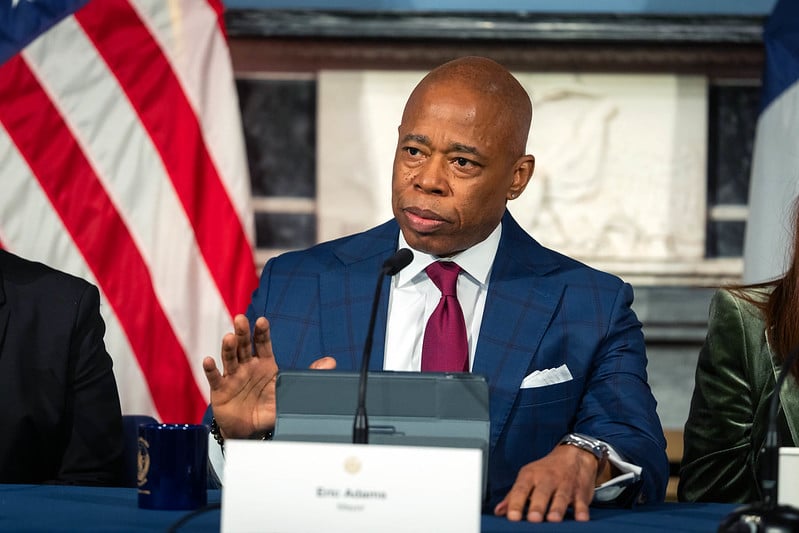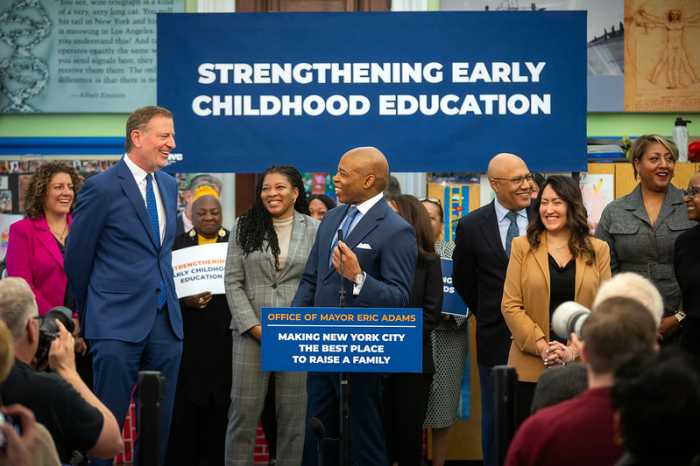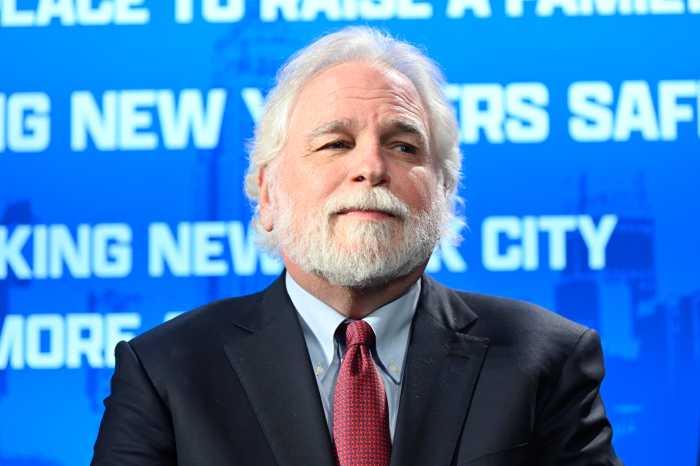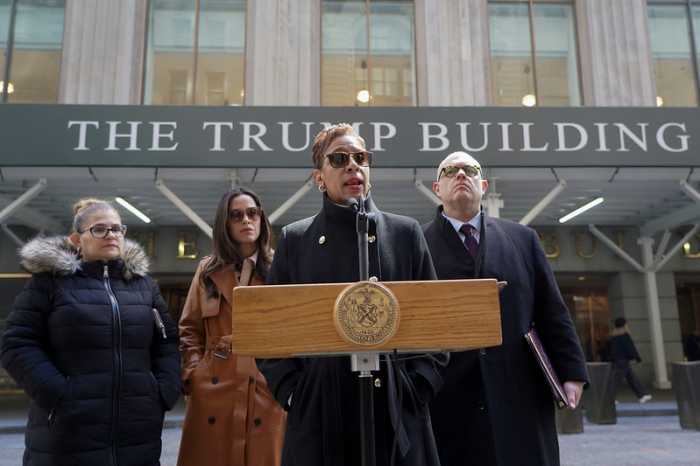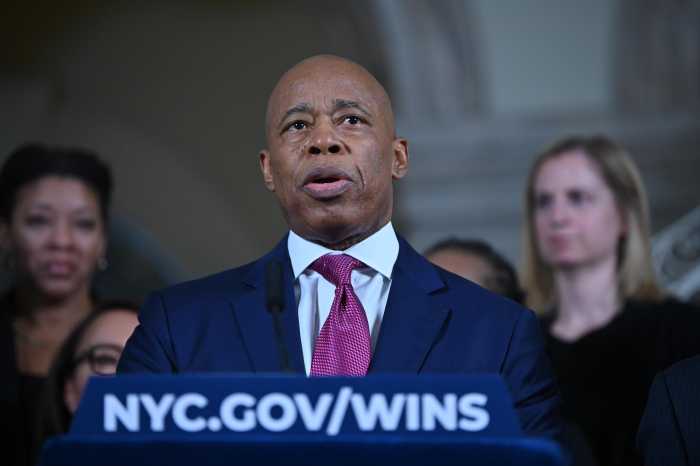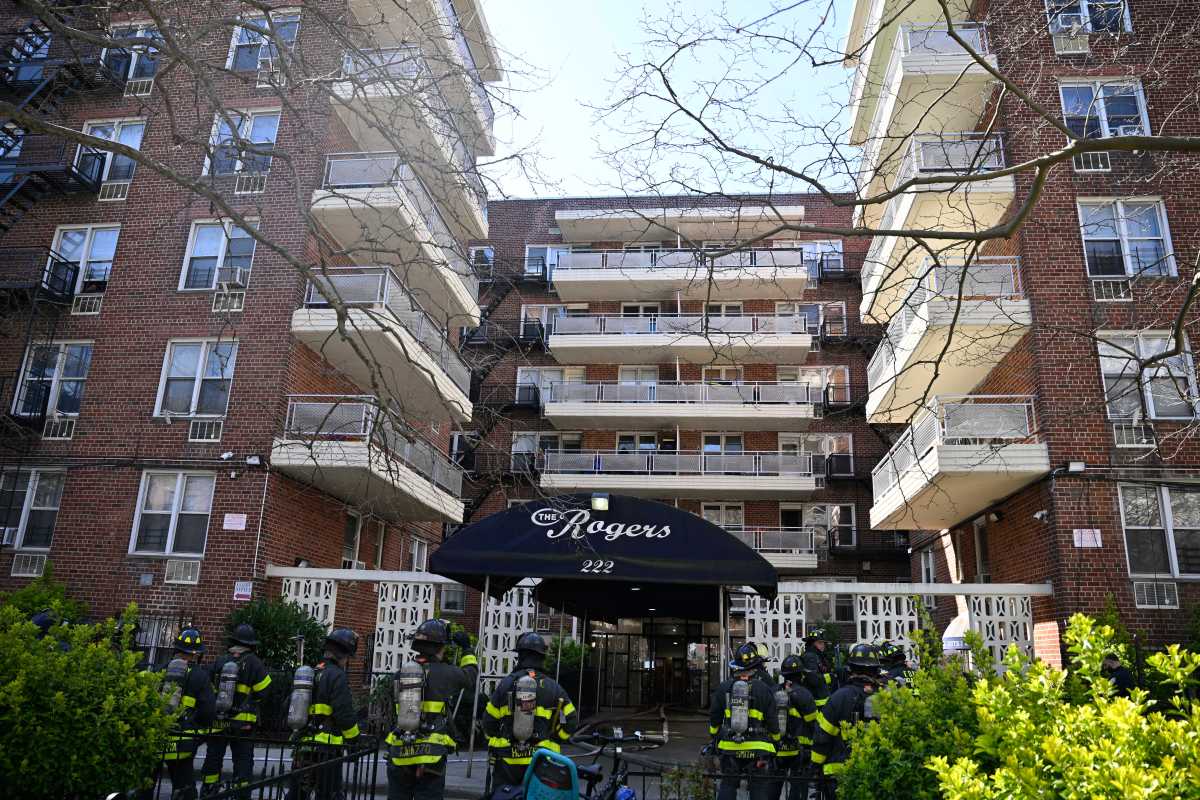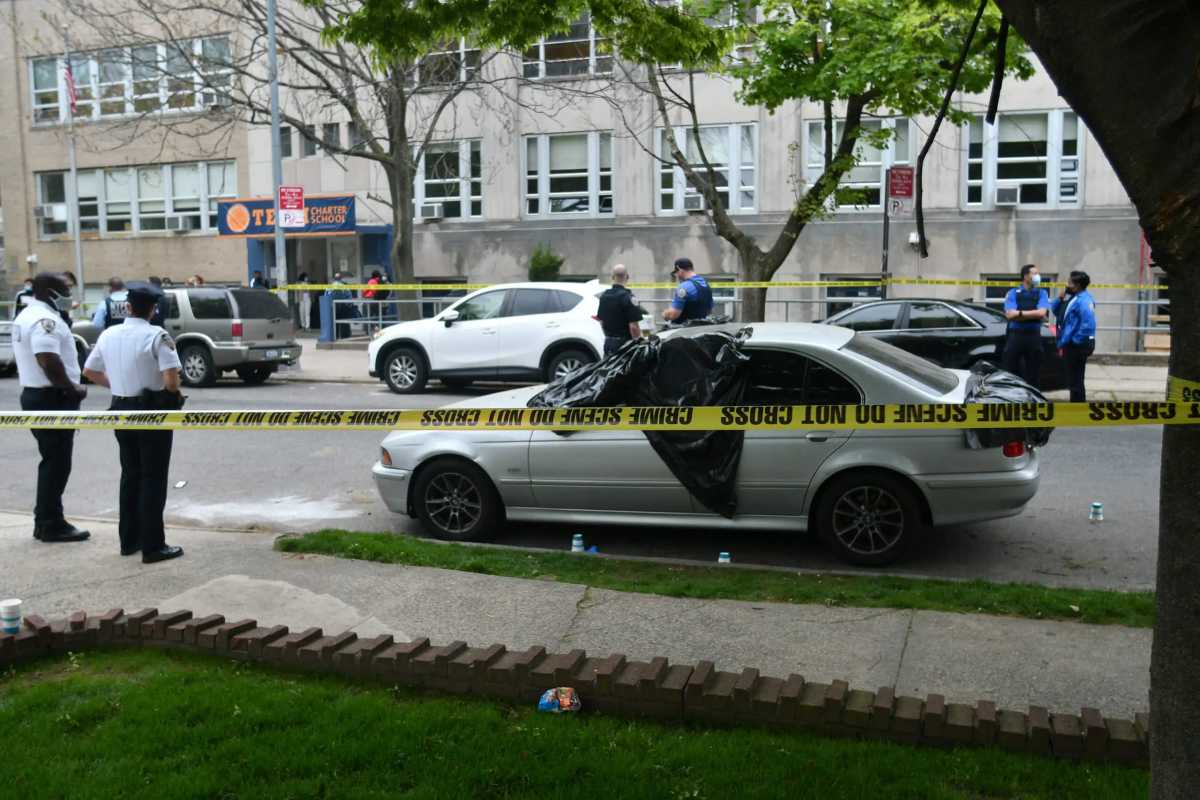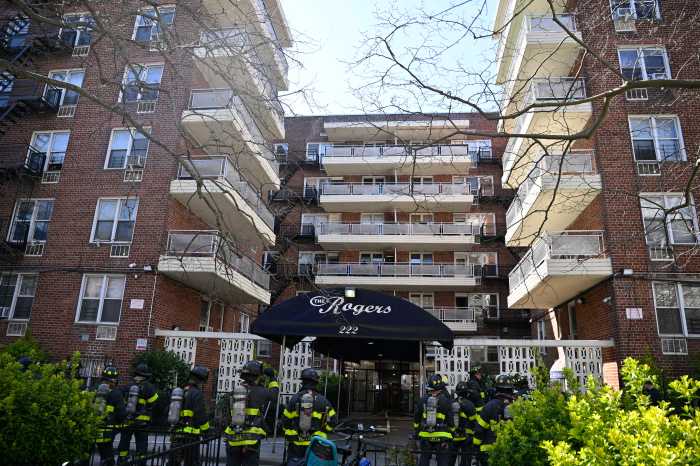Mayor Eric Adams on Tuesday unveiled his roughly $109.4 billion preliminary budget for the coming fiscal year — a plan that fully closes the projected $7 billion gap he had long warned about, pulls back on some of his most unpopular planned spending cuts, but still contains broad trims.
During his rollout of the plan at City Hall on Tuesday, the mayor also said he would back off on making further 5% cuts in April if Gov. Kathy Hochul gives the city “sufficient funding” to reimburse its spending on the migrant crisis. Earlier Tuesday, during her own budget address, the governor said she wants to give the city $2.4 billion in additional migrant funding in the coming fiscal year — a plan of which, Adams said, he still needs to “review the details.”
Adams’ balanced $109.4 billion Fiscal Year 2025 preliminary spending plan is up roughly $2 billion from the Fiscal Year 2024 adopted budget passed by the City Council last June. The plan’s rollout kicks off the next few months of negotiations between the mayor and council over the budget that must be passed by a July 1 deadline.
Adams said he was able to close the budget gap due to his administration’s “strong fiscal management” — referring to his moves to make across the board budget cuts, implementing a hiring freeze and controlling spending on the migrant crisis.
“Through responsible and effective management, we’ve been able to provide care for asylum seekers and balance the budget,” Adams said. “We did not drag our feet or waiver on our values, we made tough but necessary decisions on spending and savings early in the budget cycle.”
Those moves combined with far better than expected tax revenue allowed the administration to make some restorations to the last round of budget trims implemented in the mayor’s November Financial Plan and spare some agencies from further reductions this time around, Adams said.
Taken down a ‘PEG’
Adams’ budget makes $3.1 billion in spending cuts across city agencies under his savings initiative — known as the “Program to Eliminate the Gap” (PEG). Those come on top of $3.7 billion in cuts he made in November.
The mayor says 99% of those cuts were made without impacting city services.
“They were achieved by making service delivery more efficient and finding programs where we spent less than anticipated,” he said.
However, the plan does not include further cuts to the NYPD, FDNY and the city’s three public library systems. It also lessened the amounts by which the Departments of Education, Social Services, Youth and Community Development and Aging had to reduce their budgets.
Adams’ budget also reverses several of the most unpopular trims he made in his November Financial Plan. Those restorations include funding for one of five NYPD academy classes that were suspended, over 9,000 litter baskets that were set to be taken off city streets and a popular school summer program — known as Summer Risin — that would have lost seats and hours.
The latest 5% cuts are the second of three rounds the mayor announced last fall — reductions he says were essential in closing the projected $7 billion gap. Adams attributed that gap and the city’s fiscal woes to providing for tens of thousands of migrants, settling expensive municipal labor contracts and dwindling COVID-era federal aid.
Migrant impact
At the time the mayor ordered the cuts, his Office of Management and Budget (OMB) projected the city could spend as much as $12 billion on providing housing and services to migrants by the summer of 2025.
But since then, the administration lowered its cost estimate for the influx to $10.6 billion, which it says resulted from a 20% decrease in migrant spending and measures to move more newcomers out of the city’s shelter system — like 30 and 60 day time limits on stays. Adams says those savings, coupled with better than anticipated tax receipts — roughly $3 billion higher than OMB predicted last summer, are what allowed him to backtrack on some of his most unpopular cuts and spare some agencies from the January round.
Adams is also benefiting from Hochul’s surprising move to propose giving the city an additional $2.4 billion in migrant crisis aid, up $500 million from what she gave the city last year. Hochul, who announced the allocation during her own executive budget rollout on Tuesday, said the extra funding came from state reserves — a fund that she was reluctant to dip into.
“I made the decision that we can set aside $500 million to help cover the cost of these congregate settings that otherwise the city would have to do,” Hochul said. “We just decided this is what we have to do. It’s for the people of New York. I represent New York City as well, I never forget that. And I also think it’s important for these migrants to have a place to stay, not on the streets of New York.”
But the mayor insisted that because he and Hochul had to release their budgets on the same day, his office still needs to review how much money the city will actually net from her proposal.
“We need to really go through the details of it and see exactly what that funding is going to look like and then we will come back,” Adams said. “We’re hoping that we will have enough so that we won’t have to do the April PEG.”
The mayor’s budgeting approach of making broad cuts and then backtracking on several of them has drawn fire from his colleagues in the City Council.
Council Finance Chair Justin Brannan, after the plan was released, pointed out that the City Council had projected higher revenue than OMB late last year and argued then that there was enough money avoid the cuts in the first place.
“I think and before you can even enter into another budget cycle, you first have to agree on how much money you got there to work with,” Brannan said. “We want to reset the conversation in a collaborative way, that the Council is a co-equal branch of government, and you can’t negotiate a budget without us. And, we’re looking forward to the budget cycle.”
Brannan and the mayor have been in a war of words over the latter’s budgeting approach. The council member has charged the mayor’s about-face on some of his most high-profile cuts show he has not been a responsible steward of the city’s finances, with Adams arguing that the council does not have to make the tough choices that he does.
New York Working Families Party co-directors Ana María Archila and Jasmine Gripper went even further, arguing the mayor is patting himself for resolving a “self-created budget crisis.”
“Setting your own house on fire and then putting it out doesn’t make you a hero,” they said. “The Mayor’s self-created budget crisis has left New Yorkers to worry whether their kids will still be able to attend after-school programs or visit their neighborhood libraries on the weekend. It’s left families to wonder whether their parks will be maintained and their garbage cans emptied. At the same time, the Mayor has scapegoated newest arrivals for cuts that weren’t even necessary to begin with. This isn’t how you lead the nation’s largest and most diverse city.”
The finance chair said he’s still concerned about November cuts to public libraries that resulted in them cancelling Sunday service at most branches, which Adams has so far declined to restore.
“It’s great that we’re saving Saturday service, but we still want to restore Sunday service,” he said. “We don’t want to move on from some of those cuts from November because there’s still stuff that we want to restore, libraries being first and foremost.”



